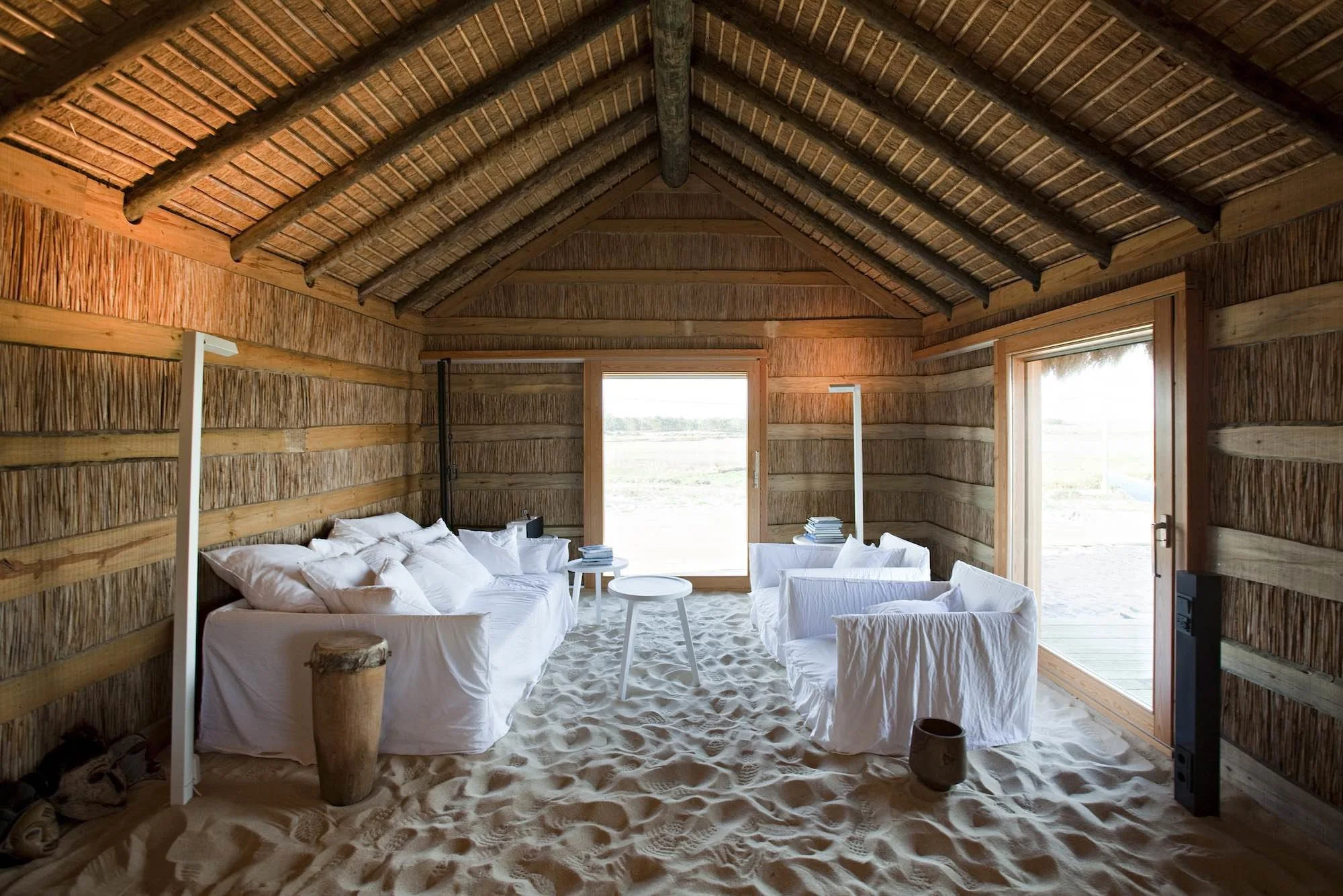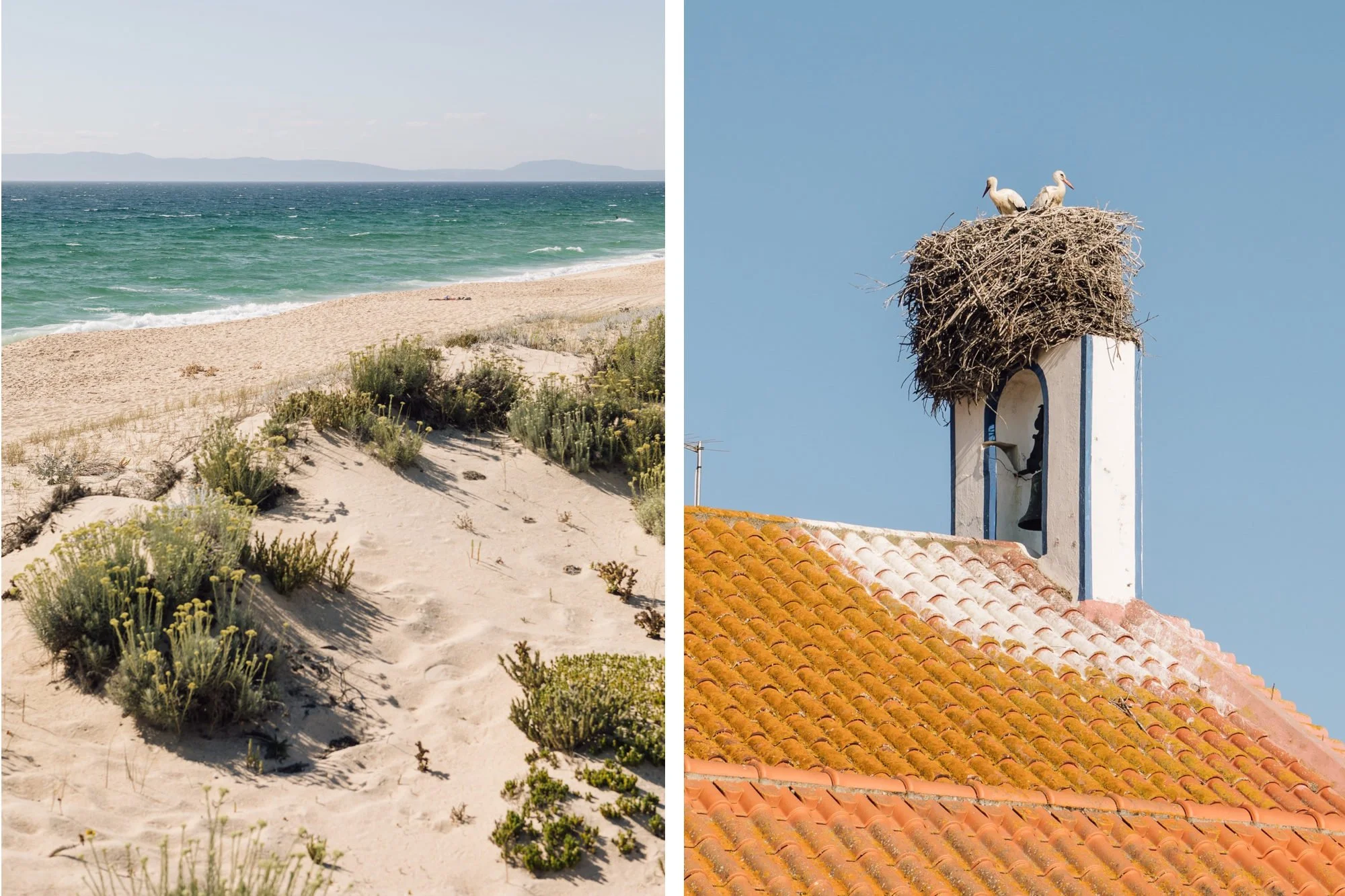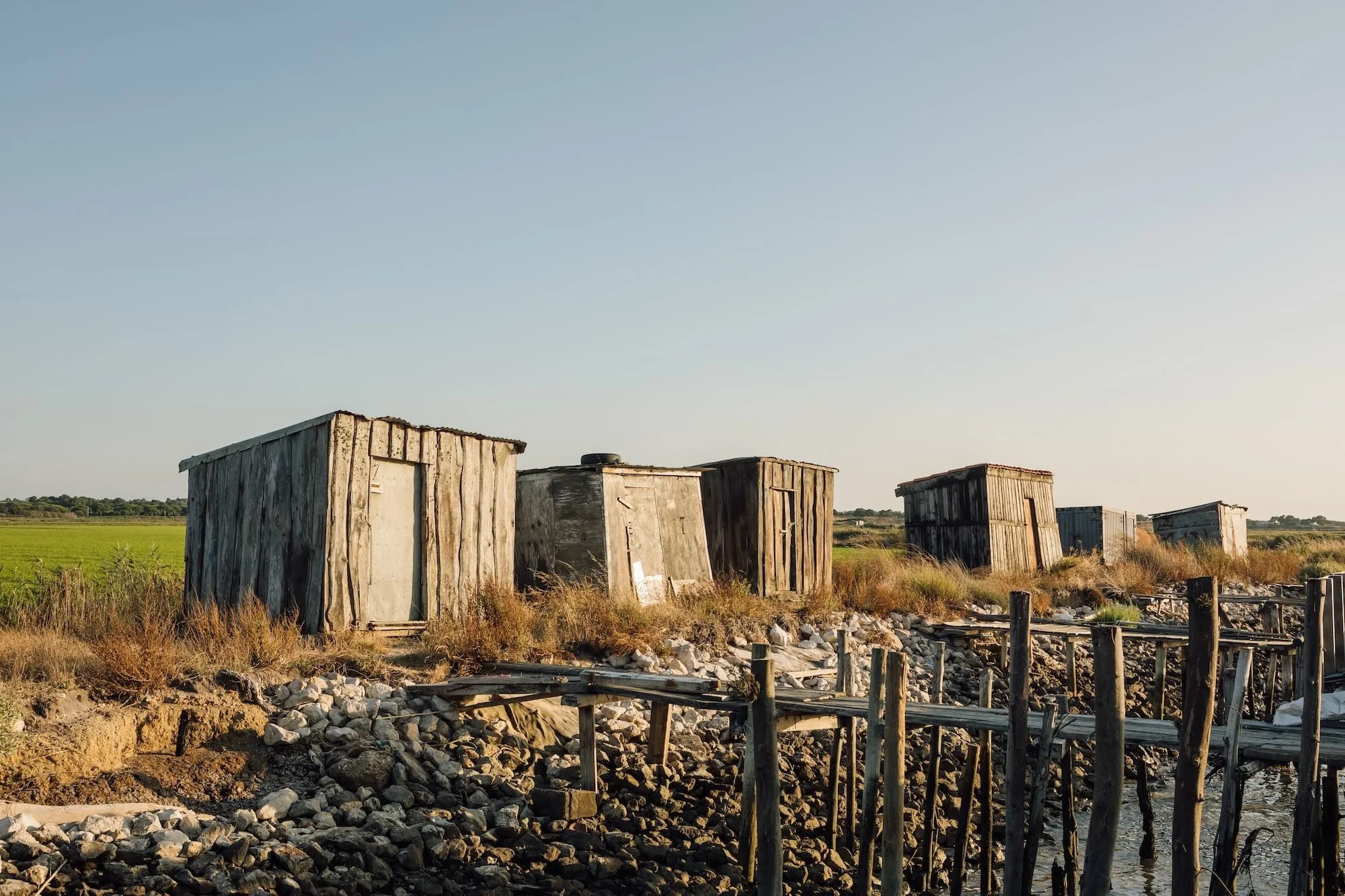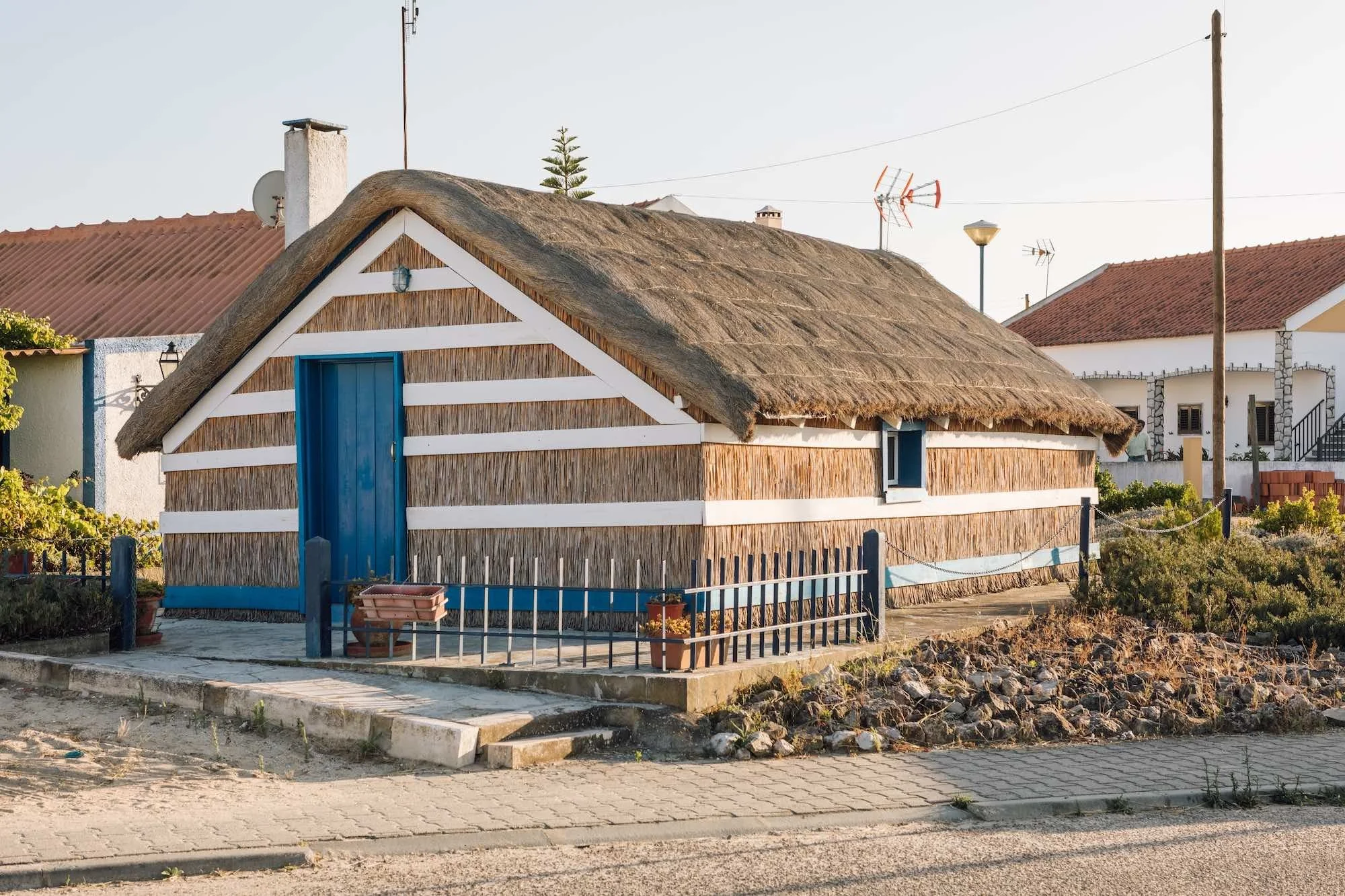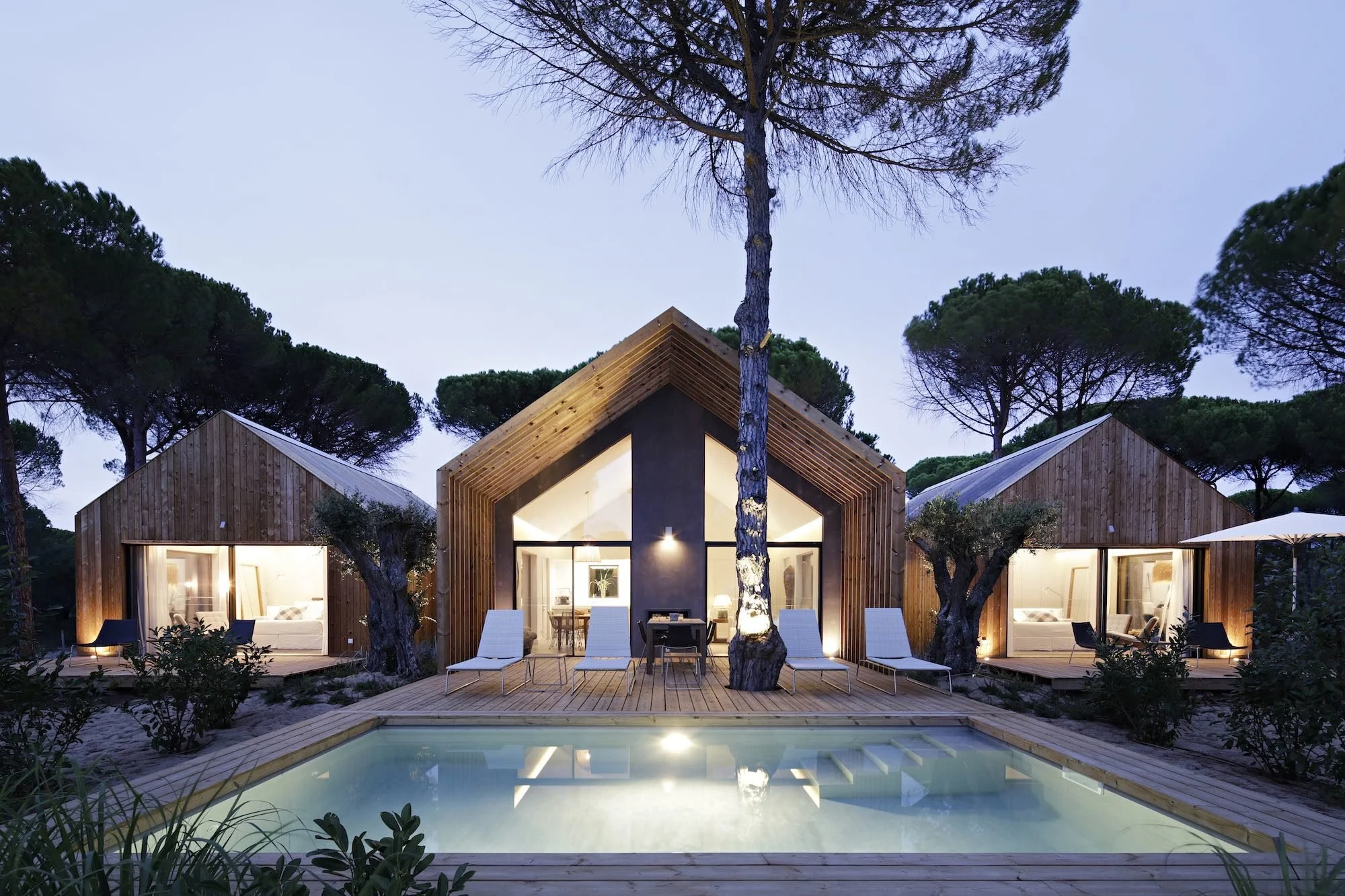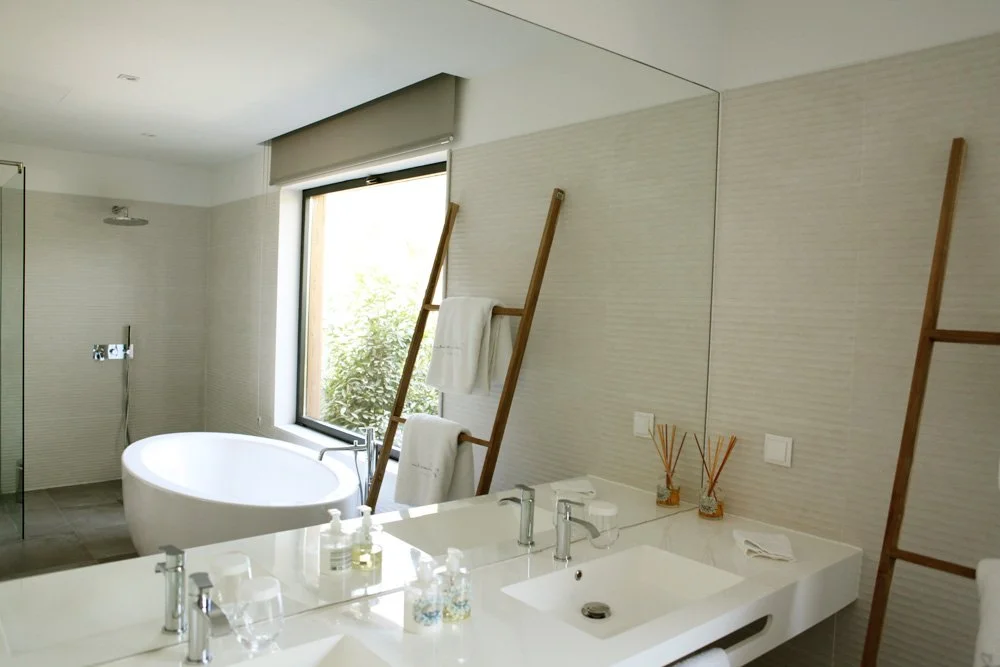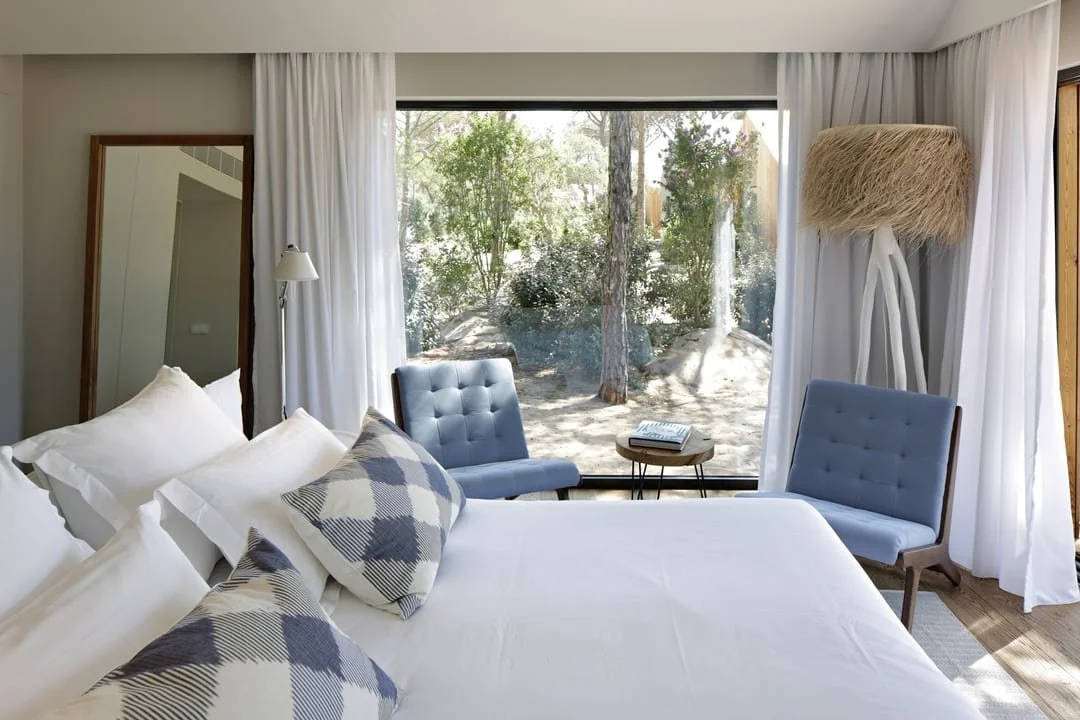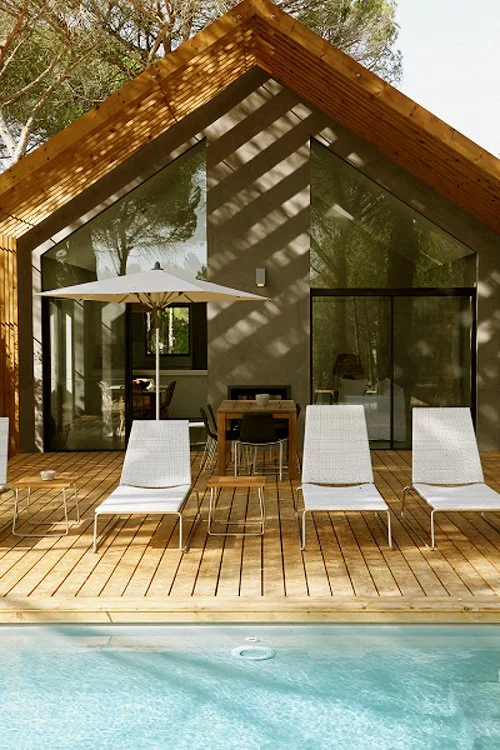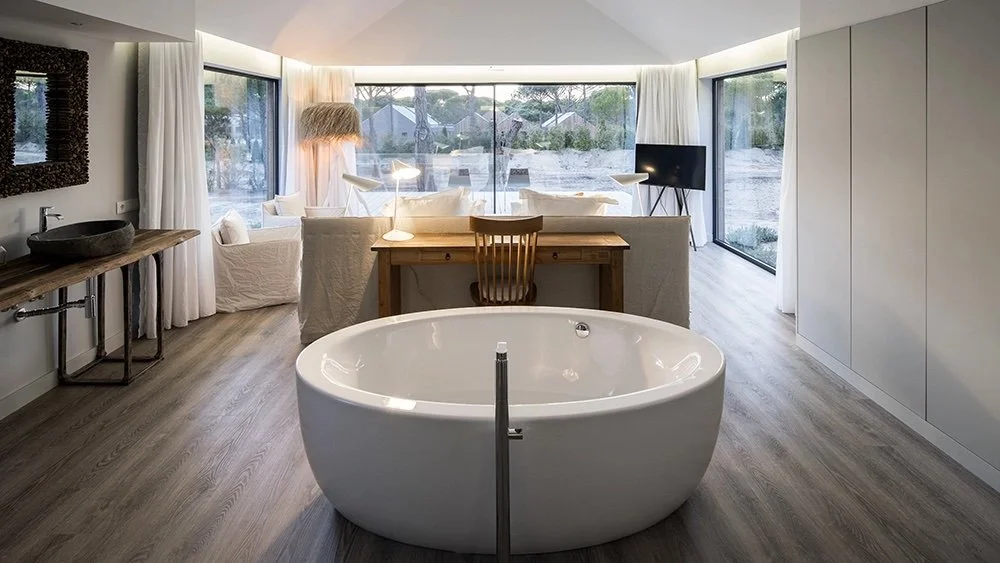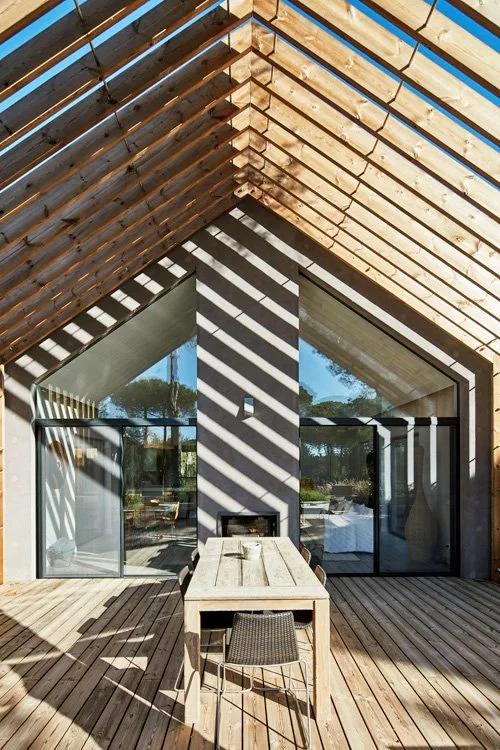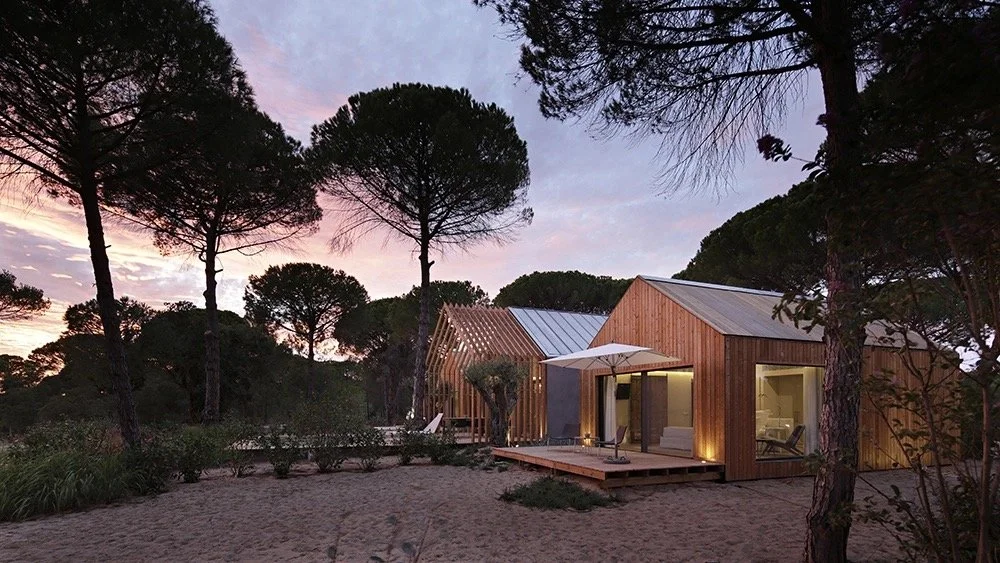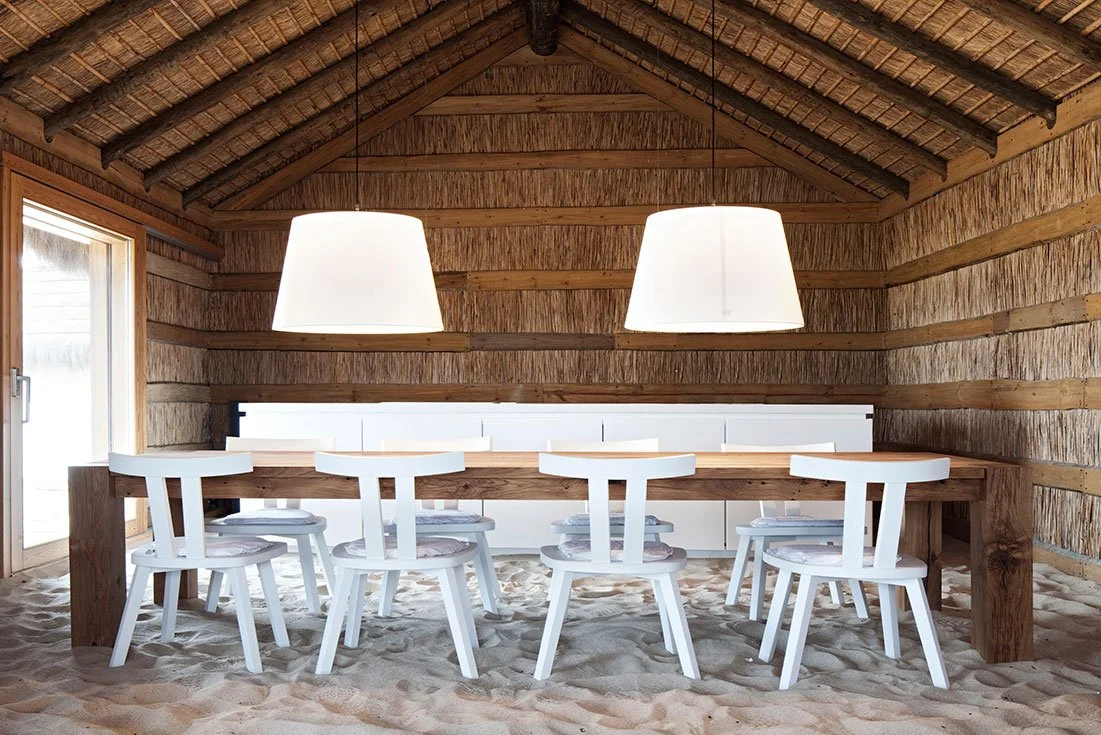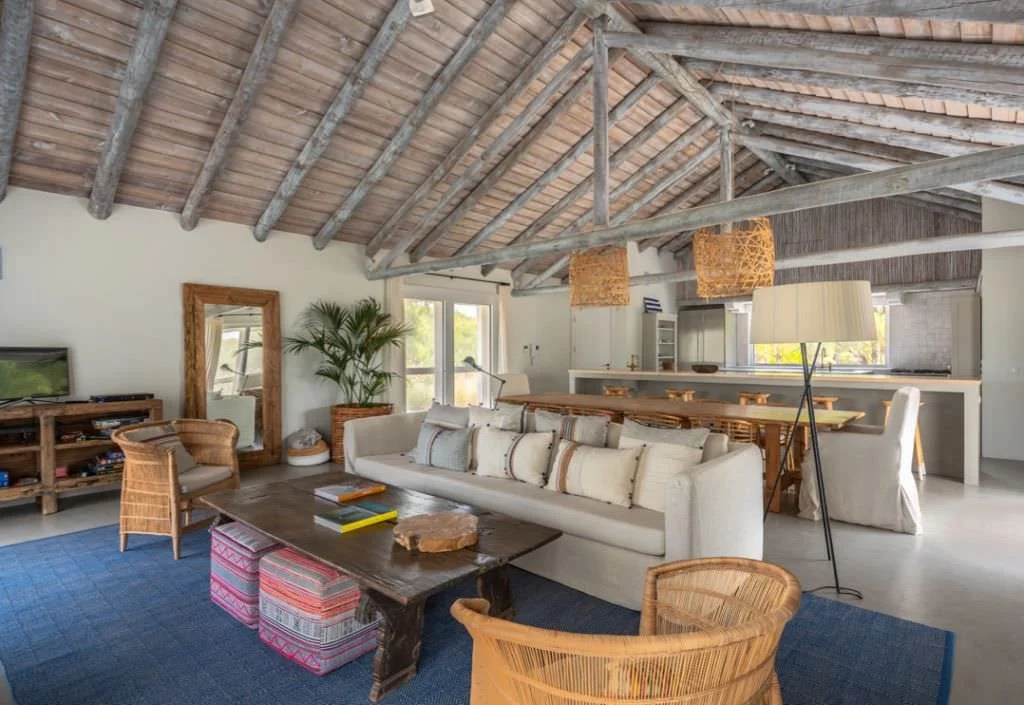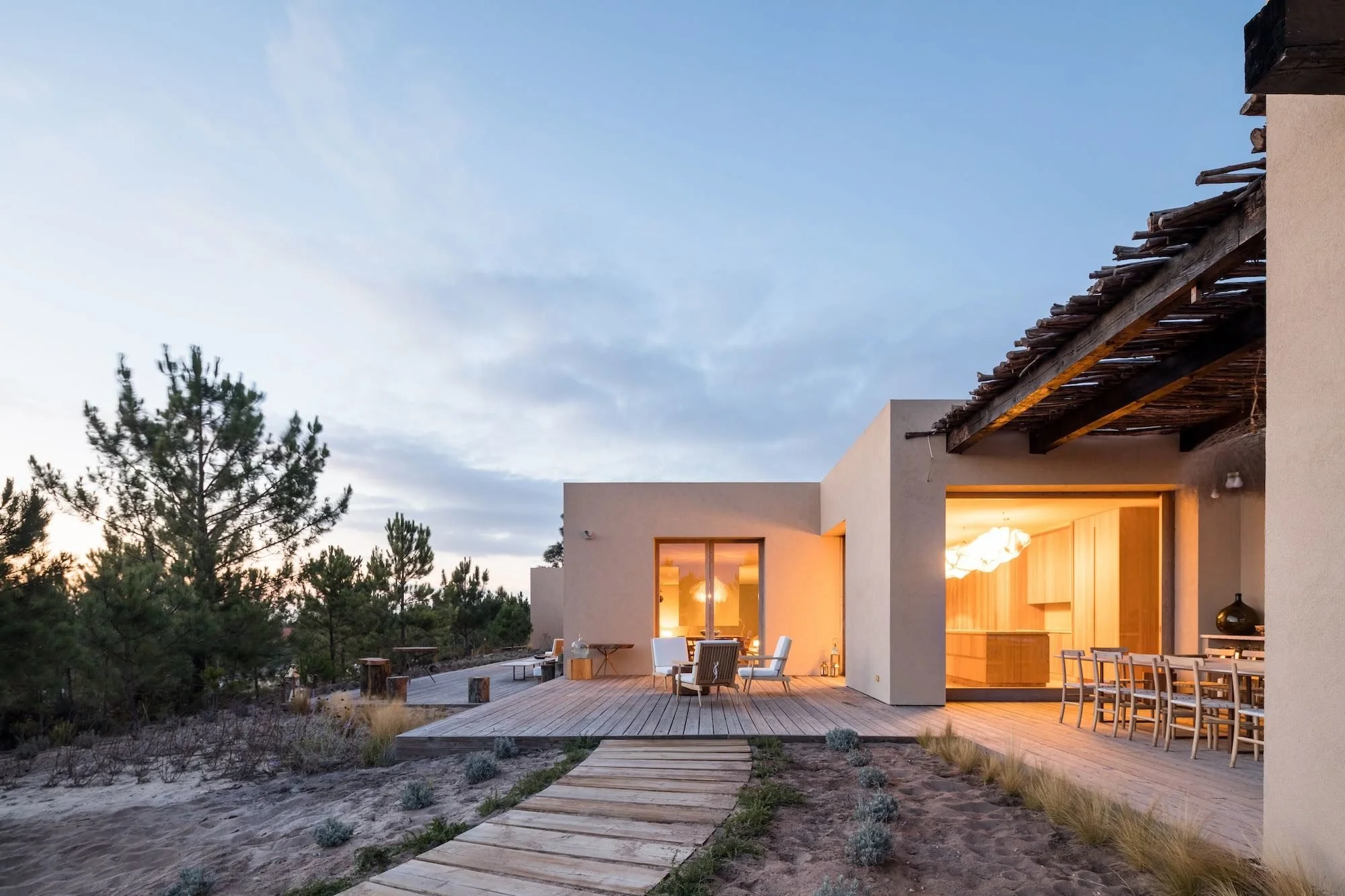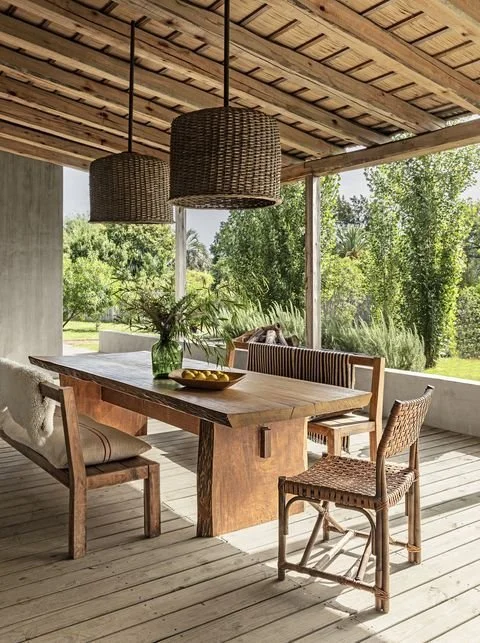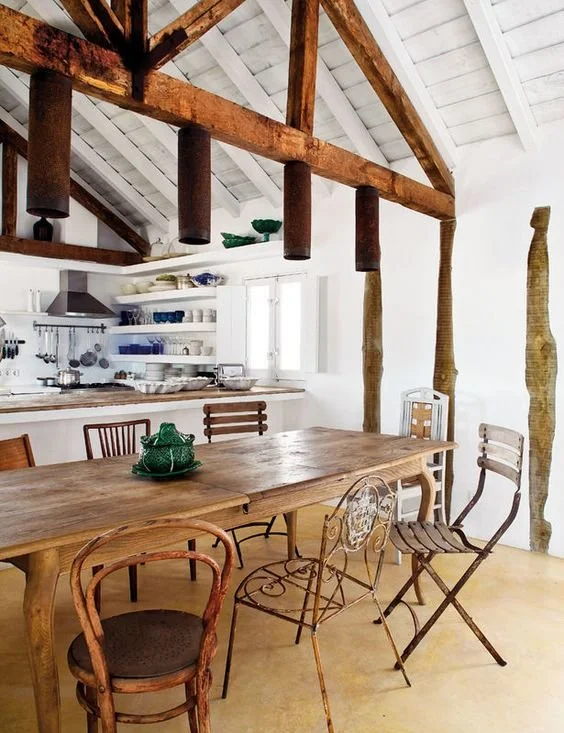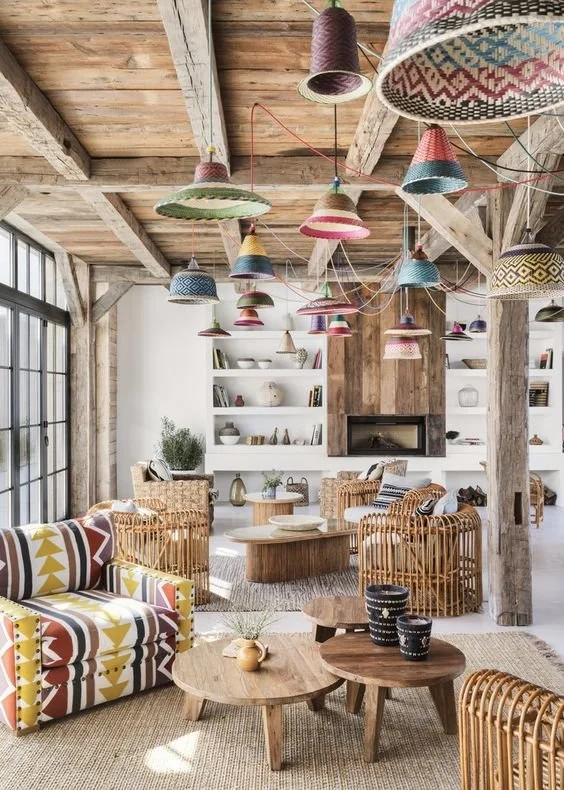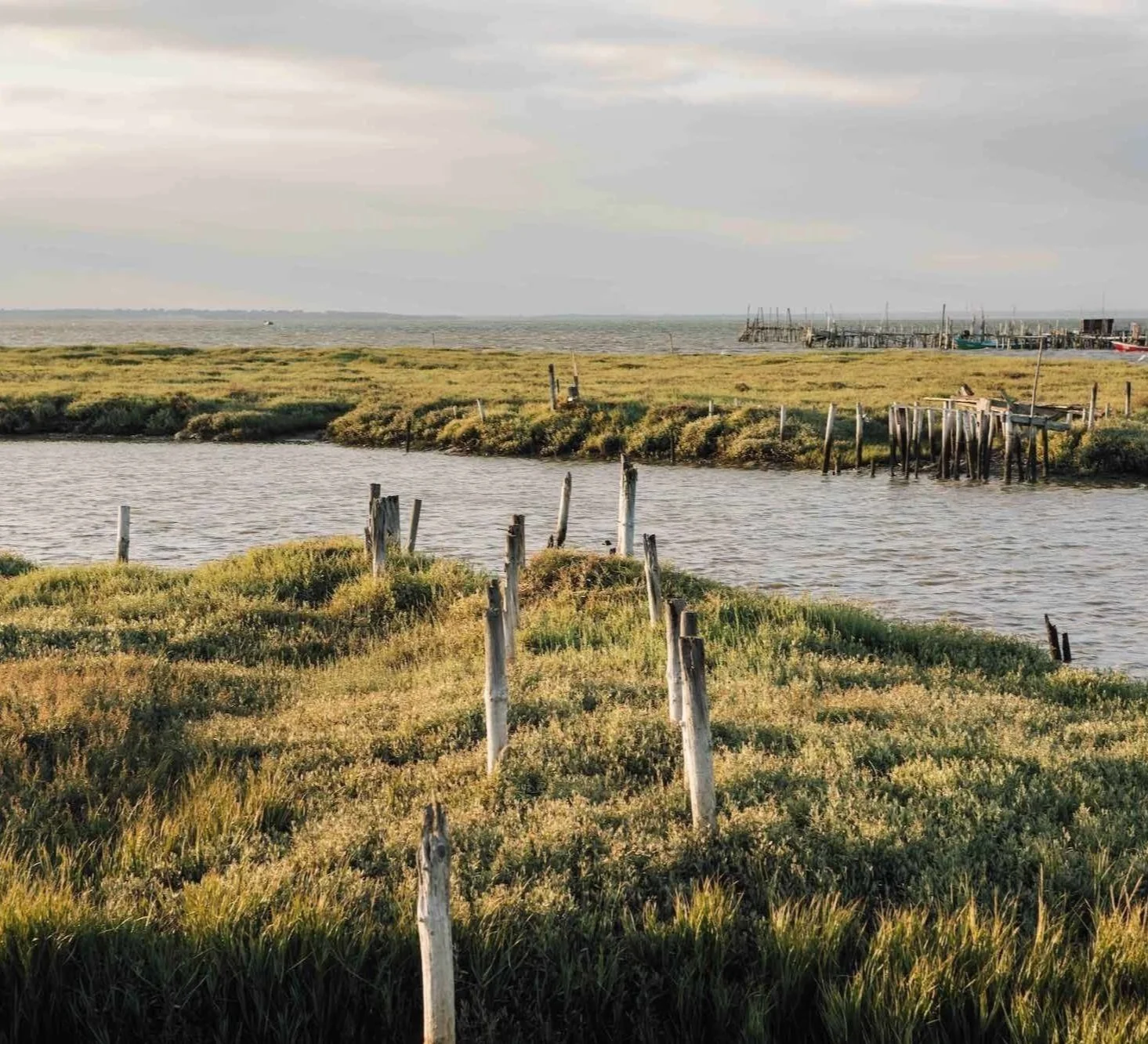Comporta Interior Design
What can be said about Comporta! It is a cradle of slow life, with a style all its own. Frequented by renowned designers and architects, Comporta has evolved from an agricultural and fishing area into a sanctuary of design and architecture. The nature-centric lifestyle, an essential part of the lives of fishermen and farmers of the past, has in no way degraded over time. During a getaway to Comporta, the relaxing and natural atmosphere will embrace you. The nearly untouched nature, thanks to strict urbanization rules, allows you to admire the kilometers of sandy dunes and the turquoise waters of the Atlantic Ocean bordering the Costa da Comporta.
Woven reed, lime walls, palm-fringed gabled roofs, Moroccan rugs, raw wooden furniture, and textiles from around the world—this is just a non-exhaustive list of what you will observe in the numerous small, often autonomous buildings that make up Comporta, each with a defined function.
Living Room, Casas Na Areia par Manuel Aires Mateuse
Source: ALMA DA COMPORTA
Woven reed, lime walls, gabled roofs covered with palm trees, Moroccan rugs, raw wooden furniture, and textiles from around the world. This is a non-exhaustive list of what you will observe in the numerous small, often autonomous buildings that make up Comporta, each with a defined function.
Comporta Beach, A stork's nest perched on the roof of a house in Comporta.
Source: Surfacemag
I. Comporta History
Comporta, a small village, is also the name of the coast, Costa da Comporta. It is a region located in the northwest of Alentejo, Portugal. Known as the Hamptons of Europe, Comporta is recognized as a dream destination, a little paradise frequented by top designers and architects. One might come across individuals like Christian Louboutin, Philippe Starck, or Pierre Yovanovitch. It has become a notable design hub with a style named after the village and coast, known as the "Comporta Style." This design, typical of the Alentejo region, blends with a Bohemian style that is environmentally respectful in its conception.
Costa da Comporta
Source: ALMA DA COMPORTA
Because, above all, Comporta is about living in harmony with nature. From its agricultural origins, Comporta maintains an intimate connection with its flora. This vast agricultural estate has been legally in existence since 1836, but its origins are said to date back to the 12th century. Comprising small fishing villages, rice fields, and salt pans, Comporta began to attract extremely wealthy individuals in 1990. They built this little paradise with sustainability as their guiding principle. The property, known as "Herdade" in Portuguese, belonged to the Espirito Santo family. This family, who made their fortune in banking, hosted numerous personalities of the time, such as Prince Albert of Monaco and Princess Caroline of Hanover. Three decades ago, Vera Espirito Santo invited the interior designer Jacques Grange. Mesmerized by the pristine landscape, he immediately fell in love with the region. It was a Robinson Crusoe lifestyle, without running water or electricity. Eventually, Jacques ended up buying a house from Vera's mother.
Fishermen's huts in Comporta.
Source: Surfacemag
With the family being the majority owner, they developed this region. Strict building codes were in place, allowing the family to construct thoughtfully and control tourism.
As the years passed, Comporta attracted more and more attention.
In 2014, the Espirito Santo family faced bankruptcy. The Herdade da Comporta was seized, and subsequently, a mass sale took place. Despite being a highly sought-after destination, there were still properties available for sale!
Long-time tourists like Christian Louboutin expressed concerns about the influx of crowds, with Parisian wealth being a significant part of the masses. Hotel complexes and various public and private projects emerged. Fortunately, despite changes in ownership, the Herdade da Comporta has not been degraded but rather respected. Renowned architects have played a crucial role in preserving its spirit, ensuring that projects are environmentally friendly and respectful of the local flora.
II. What’s the Comporta Style?
On the Costa da Comporta, rice fields, hamlets, and beaches serve as the playgrounds for modern architects such as Philippe Starck, Vincent van Duysen, Manuel Aires Mateus, Miguel Câncio Martins, and José Alberto Charrua. Recognize many names, don't you? Since its emergence as a must-visit destination, Comporta has become a dream sandbox for creativity. From its origins as thatched-roof fishermen's huts with palm-covered roofs and lime walls, it was Vera (a member of the Espirito Santo family) who elevated these environments by importing wonderful pieces of raw wood furniture from Bali, as well as textiles from Peru and Morocco.
Nowadays, she is recognized as Comporta style creator. The legacy of this style has not been lost, thanks to the talent of our modern architects who have respected its origins while introducing a contemporary touch. The Sublime Comporta Hotel is known as the first and celebrated example of this modernity, brought to life by Miguel Câncio Martins and José Alberto Charrua. Small wooden and concrete buildings are scattered across a pine and sand estate, a marvelous pine forest. Despite the use of concrete, these houses blend seamlessly with the very natural surroundings.
Villa, Hôtel Sublime Comporta
Source: Courtesy Sublime Comporta
The integration with nature is the key point of the Comporta Style, as demonstrated by Manuel Aires Mateus in 2008 with his villas called "Casas Na Areia," translated as "Houses in the Sand." The small huts housing the kitchen and common living area have floors made of white sand. What could be better than living with your feet in the sand, like Robinson Crusoe!
All new architectures adhere to these principles of conservation and the slow life spirit.
Casas Na Areia, Comporta
Source: ALMA DA COMPORTA
As for interior design, the secret recipe is quite simple.
A palette of pastel colors, a raw ceiling, often with exposed beams, and a bohemian decor. The furniture should be made of wood, raw, and waxed—depending on your preferences, but solid wood is crucial for the furniture. Caning and weaving are also essential for Comporta buildings.
The secret of this style lies in "short circuit" decoration. Artisans, ceramists, upholsterers in the region, as well as Portuguese artists, offer a range of beautiful objects that can enhance a simple and raw interior. Colorful patterns are also the DNA of the Comporta style; Vera Espirito Santo, for example, brought textiles from Peru to add color to her interiors.
These villas, surrounded by a diverse landscape, often have large glass windows. These expansive transparent spaces allow the occupant to immerse themselves, if only for a moment of admiration, in the midst of this protected and untouched nature. Cohesion with nature, living with nature, is the essence of this style.
Living room - Comporta
Source: Magazine Lecollectionist
Exterior - Comporta Villa
Source: Surfacemag
III. "Must-haves" & "Essentials" ?
What could be better than a large dining table crafted with a solid, raw wood tabletop, where you can perceive the passage of time, the age, and the trials that the wood has endured! Accompanied by legs also made of solid wood, they can be painted or finished differently from the tabletop to vary the textures and provide detail.
Marvelous solid raw wood table.
Source: Pinterest @felixomgba
Pair this marvelous table with chairs made of wood, wicker, or featuring cane details! But, most importantly, don't feel constrained to use a single chair design—mix it up. For the floor, beautiful oversized rugs with colorful patterns and a soft, soothing texture, such as Moroccan or Peruvian rugs, can be a perfect addition.
Chaises de multiples confections
Source: Pinterest @charlinenoblet
For the lounge area, prioritize sofas with a comfortable look, ones in which you would like to immerse yourself. A cover made of natural linen, hemp, or other natural materials that offer tones like beige, sand, or limestone will elegantly dress your sofa. As for decoration, our must-haves would include beautiful ceramic artworks, where handmade craftsmanship is felt and becomes an integral part of the character.
For the seating area, opt for sofas with a comfortable appearance, ones that invite you to immerse yourself. A cover made of natural linen, hemp, or other natural materials that offer tones like beige, sand, or limestone will elegantly dress your sofa. As for decoration, our essentials would be beautiful ceramic artworks, where handmade craftsmanship is felt and becomes an integral part of the character.
Colorful living room
Source: Pinterest @SLHLuxuryHotels
To conclude
We can observe the omnipresence of nature in Comporta, and the importance given to this nature has existed since the birth of this region.
Initially by the fishermen, whether by choice or necessity, this coexistence with nature has traversed the centuries to reach us. What stands out is the ease, propriety, and the natural way in which the inhabitants of Comporta work with their environment. Locally sourced, healthy, sustainable, and a way of living in harmony with neighbors or among small huts.
We believe that Comporta is not just the Comporta Style but, above all, the Comporta lifestyle, which should be taken as an example of respect for our social and environmental surroundings.
Comporta's riverbanks
Source: Surfacemag

